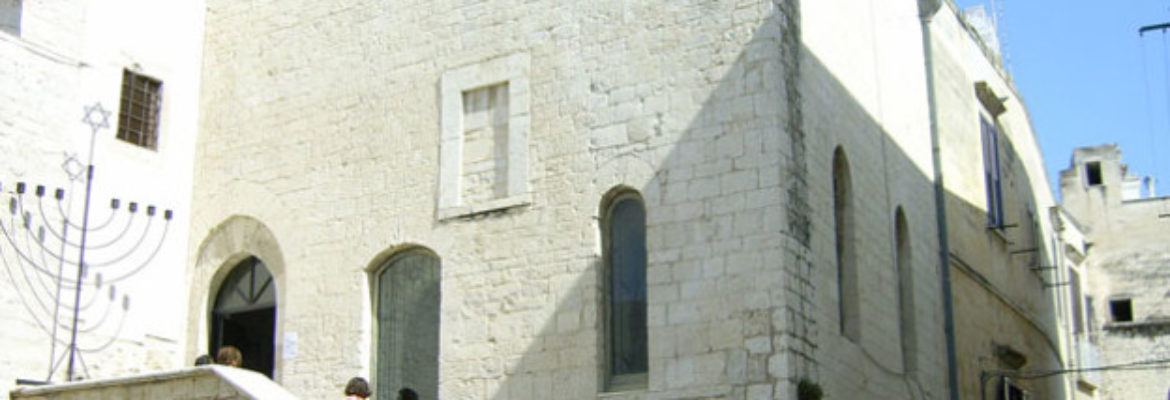Trani, along with Oria, Bari and Otranto, is one of the Apulian towns with the largest, most longstanding Jewish community, from Roman times until 1541, the year when all the Jews were expelled from southern Italy. Merchants, but also scholars renowned throughout the European diaspora, lived in Puglia. There was no shortage of attempts at forced conversions and grave defamation as a result of popular prejudice.
The first Giudecca (a neighbourhood where Jews spontaneously formed a community) lay between the cathedral and the harbour, within the inner ring of Byzantine-Lombard city walls. Today, this area is part of the San Donato neighbourhood. It consists of a dense network of lanes and streets that reach as far as the Porta Antica. Street names commemorate the past: Via La Giudea, Via Sinagoga, Via della Giudecca, Vico La Giudea, Via Mosè da Trani, Largo Scolanova.
There were four synagogues in the area, all of which were turned into churches in around 1380 under Charles III of Durazzo. At that time 310 Jews underwent forced baptisms (the so-called “New Christians”). The new churches were dedicated to San Leonardo Abate, San Pietro Martire, Santi Quirico e Giovita and Santa Maria in Scolanova. The first two were later demolished; Santi Quirico e Giovita, now called Sant’Anna, was built in 1247 on the ruins of the synagogue.
When there was an additional influx of Jews in the 15th century, the community moved to a second Giudecca, near Porta Nuova.
The cemetery stood outside the walls beyond the church of the Trinità della Cava (now called San Francesco), to the right of the coastal road that led from the town to the Colonna peninsula.
Via La Giudea, Via Sinagoga, Via della Giudecca, Via Mosè da Trani, Vico La Giudea, Largo Scolanova

